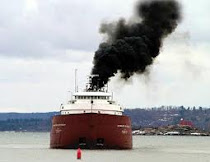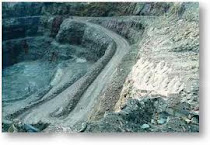Leia Mais…
 Breathe easy: Unipharm Pharmacy Subang Jaya assistant Noor Azlina Baharudin giving out face masks to Amir Zakee Adnal and his family after several places in the Klang Valley recorded unhealty API levels yesterday.
Breathe easy: Unipharm Pharmacy Subang Jaya assistant Noor Azlina Baharudin giving out face masks to Amir Zakee Adnal and his family after several places in the Klang Valley recorded unhealty API levels yesterday.

One block falls, pushing the one in front of it, making another one fall, and then another. This figurative image, a chain reaction of falling blocks, can be seen in recent scientific research that shows the domino effect and consequences of the environment on health. Tel Aviv University (TAU) researcher Dr. Yariv Gerber of TAU’s School of Public Health at the Sackler Faculty of Medicine has discovered that air pollution can impact cardiac events like heart attack and stroke as well as cause repeated episodes of these cardiac events.
As a result, air pollution is not only a danger to the environment but it is also harmful for the human body. It can have major risks such as respiratory infections, lung cancer, and heart disease. The project was done in collaboration with Professor Yaacov Drory and funded by the Environmental and Health Fund in Jerusalem. In the study, cardiac patients who lived in areas with high pollution had a 40 percent higher chance of having a second heart attack as compared to patients who lived in places with low air pollution. The findings were presented at the San Diego Epidemiological Meeting of the American Heart Association in March and the Annual Meeting of the Israeli Heart Society in April.
“We know that like smoking cigarettes, pollution itself provokes the inflammatory system. If you are talking about long-term exposure and an inflammatory system that is irritated chronically, pollution may well be involved in the progression of atrial sclerosis that manifests in cardiac events,” remarked Gerber in a prepared statement.
Gerber started the project with the goal of demonstrating a connection between the long-term effects of air pollution and the heart attack risks for myocardial infarction (MI) patients. In the experiment, the scientists analyzed data from 1,120 first-time MI patients who had stayed at one of eight hospitals in central Israel between 1992 and 1993. The participants were all under 65 years of age when admitted to the hospital and were then given a follow-up interview in 2011, 19 years after initial contact with the investigators.
The researchers measured air quality in the areas where patients lived with monitoring stations and a group of scientists looked at the information collected at the Technion in Haifa. They adjusted for outside factors like disease severity and socio-economic status, and concluded that there was a relationship between pollution and negative clinical outcomes like mortality, heart attack, heart failure, and stroke. When compared to the statistics of participants who lived in less polluted areas, the participants residing in the most polluted areas had a 43 percent higher risk of having a second heart attack or suffering congestive heart failures as well as 46 percent higher chance of having a stroke. The study also reported that people who lived in heavily polluted areas were 35 percent more likely to die 20 years after the first attack then those who lived in less polluted areas.
The influence of air pollution on the human body maybe even greater than what was discovered in the study.

Ships pour out large quantities of pollutants into the air, principally in the form of sulphur and nitrogen oxides.
The emissions from ships engaged in international trade in the seas surrounding Europe - the Baltic, the North Sea, the north-eastern part of the Atlantic, the Mediterranean and the Black Sea - were estimated to have been 2.3 million tonnes of sulphur dioxide and 3.3 million tonnes of nitrogen oxides a year in 2000.
In contrast to the progress in reducing emissions from land-based sources, shipping emissions of sulphur and nitrogen oxides are expected to continue increasing by as much as 40 per cent by 2020. As a result, by 2020 the emissions from international shipping around Europe is expected to equal or even surpass the total from all land-based sources in the 27 EU member states combined.




